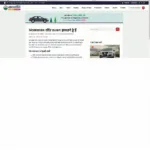Water car wash service pipes are a fantastic way to make car washing at home easier and more efficient. While professional car wash services have their benefits, having a dedicated water pipe system for washing your car offers a level of convenience and customization that’s hard to beat. Plus, building your own DIY car wash system can be a fun and rewarding project for any car enthusiast. This comprehensive guide will walk you through the process of creating your own water car wash service pipe from readily available materials, allowing you to enjoy a professional-quality clean from the comfort of your own home.
Planning Your DIY Car Wash Service Pipe System
Before diving into the construction process, careful planning is essential for a successful DIY car wash pipe system. Here are some key factors to consider:
1. Water Source and Pressure:
- Determine the most convenient and accessible water source for your setup. An outdoor faucet with sufficient water pressure is ideal. If your water pressure is low, consider incorporating a pressure booster pump into your system.
2. Pipe Material:
- PVC pipes are the most popular choice for DIY car wash systems due to their affordability, durability, and resistance to corrosion. They are also lightweight and easy to work with.
3. Nozzle Selection:
- A high-quality spray nozzle is crucial for effective car washing. Look for a nozzle with adjustable spray patterns, allowing you to switch between a jet stream for stubborn dirt and a wider spray for rinsing.
4. System Layout and Length:
- Plan the layout of your pipe system to ensure it reaches all areas of your car comfortably. Consider the length of your car and the area where you’ll be washing it.
Essential Tools and Materials
Gathering the necessary tools and materials beforehand will streamline your building process. Here’s a checklist to get you started:
- PVC pipes: Choose a diameter that provides a balance between water flow and pressure. A diameter of ½ inch or ¾ inch is generally suitable for car washing.
- PVC pipe cutter or hacksaw: For cutting PVC pipes to the desired lengths.
- PVC primer and cement: To create secure and leak-proof joints between pipes and fittings.
- Measuring tape: For accurate measurements of pipes and fittings.
- Teflon tape: To seal threaded connections and prevent leaks.
- Adjustable wrench: For tightening fittings and connections.
- Spray nozzle: Opt for a nozzle with adjustable spray patterns for versatile cleaning.
- Garden hose connector: To connect your pipe system to your water source.
- Optional components:
- Pressure booster pump (for low water pressure)
- Inline water filter (to protect your car’s paint)
- Shut-off valve (for easy water control)
Building Your DIY Water Car Wash Service Pipe
Now that you have your plan and materials ready, follow these steps to assemble your DIY car wash pipe system:
Step 1: Measure and Cut the PVC Pipes
- Measure the desired lengths for your PVC pipes based on your system layout and the area you’ll be using it in.
- Use a PVC pipe cutter or hacksaw to cut the pipes to the marked lengths. Ensure clean, straight cuts for secure connections.
Step 2: Assemble the Pipe System
- Apply PVC primer to the inside of the pipe ends and the outside of the fitting connections.
- Immediately follow with PVC cement to both surfaces.
- Quickly push the pipe and fitting together, twisting slightly to ensure an even distribution of cement.
- Hold the joint firmly for a few seconds to allow the cement to set.
- Repeat these steps for all pipe and fitting connections.
Step 3: Connect to the Water Source
- Attach a garden hose connector to one end of your assembled pipe system using PVC cement.
- Wrap Teflon tape around the threaded end of the connector to ensure a watertight seal.
Step 4: Attach the Spray Nozzle
- Attach your chosen spray nozzle to the other end of the pipe system.
- Most spray nozzles have threaded connections, so wrap Teflon tape around the threads before tightening.
Step 5: Test Your System
- Before using your DIY water car wash service pipe, it’s essential to test the system for leaks.
- Connect a garden hose to the water source connector and turn on the water.
- Carefully inspect all joints and connections for any signs of leaks.
- If you detect any leaks, immediately turn off the water, allow the cement to dry completely, and reapply primer and cement to the affected area.
Tips for Using Your Water Car Wash Service Pipe
- Start with a Rinse: Begin by rinsing your car with water to remove loose dirt and debris.
- Work From Top to Bottom: Wash your car from the top down to prevent dirt from streaking down on already cleaned areas.
- Use the Right Spray Pattern: Adjust your spray nozzle for the appropriate water pressure and pattern for each washing task.
- Don’t Forget the Wheels: Pay special attention to your car’s wheels and tires, as they tend to accumulate the most dirt and grime.
- Dry Thoroughly: After washing, dry your car using a microfiber towel or a dedicated car dryer to prevent water spots.
Conclusion
Building your own water car wash service pipe is a practical and rewarding way to take control of your car washing routine. By following these step-by-step instructions, you can create a customized car wash system that meets your specific needs and preferences. Enjoy the convenience, cost savings, and satisfaction of having a professional-quality car wash right at your fingertips.
FAQs
1. Can I connect my DIY car wash pipe system to a well pump?
Yes, you can connect it to a well pump, but ensure your well pump provides sufficient water pressure for effective car washing. If not, consider using a pressure booster pump.
2. How do I prevent my PVC pipes from freezing in winter?
To prevent freezing, detach your pipe system from the water source and store it indoors during winter. Alternatively, you can use compressed air to blow out any remaining water from the pipes.
3. Can I add a soap dispenser to my DIY car wash system?
Yes, you can! Several online tutorials explain how to integrate a soap dispenser into your system. Just make sure to use car wash soap specifically designed for use with a pressure washer or hose-end sprayer.
4. What is the best way to store my car wash pipe system when not in use?
Store it in a dry, shaded area to prevent damage from sunlight and moisture. Consider coiling the pipes and hanging them on a wall mount or storing them neatly in a storage bin.
5. How often should I clean my DIY car wash pipe system?
It’s a good practice to flush your system with clean water after each use to prevent soap or dirt buildup. You can also periodically disassemble the system and rinse each component with clean water.
Need help with advanced car diagnostics or troubleshooting? Connect with our team of experts via WhatsApp: +1(641)206-8880 or email us at [email protected]. We offer 24/7 support for all your automotive needs.

